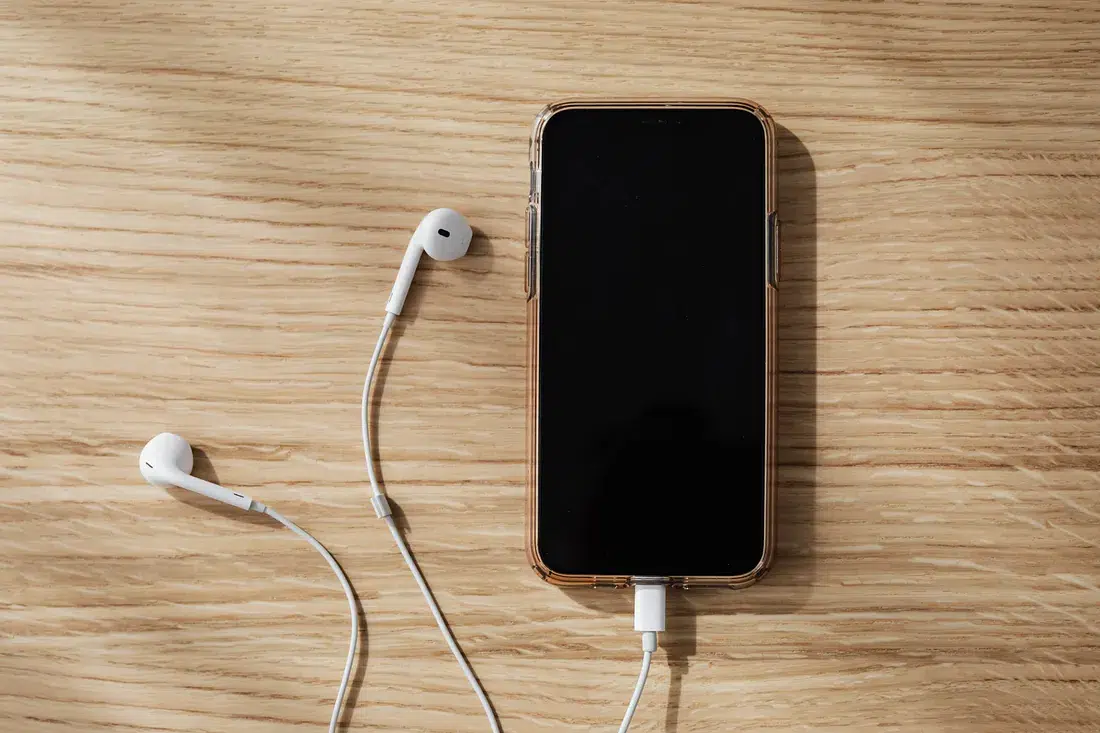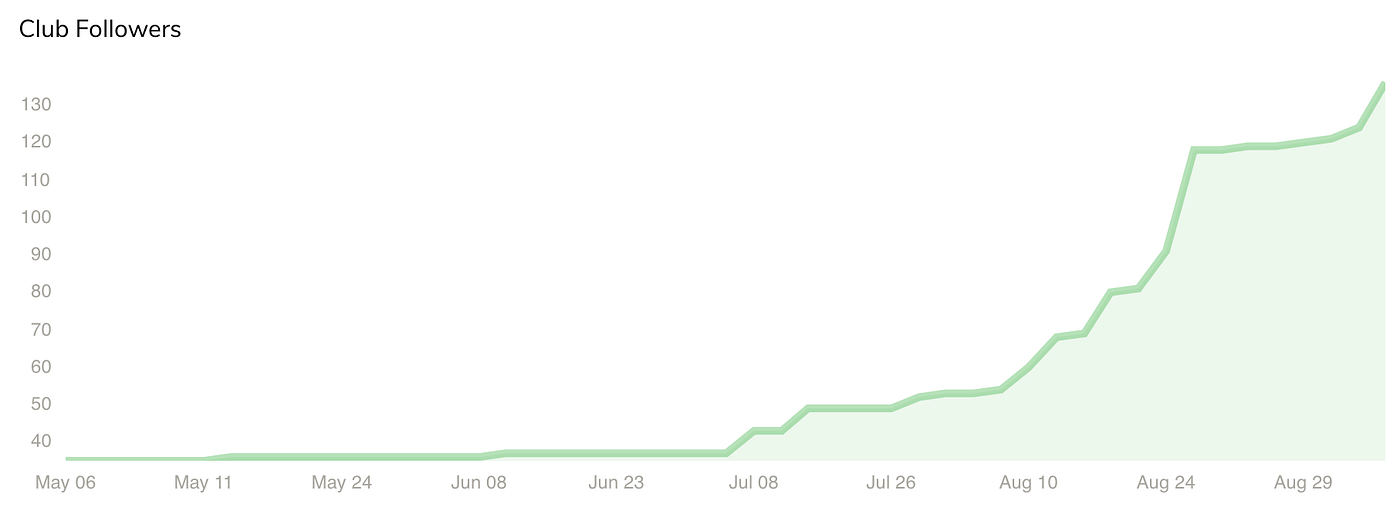Recording comes to Clubhouse: will brands take another look?

On Clubhouse this past August, I hosted a conversation with “This American Life” producers Nadia Reiman and Sean Cole. It occurred to me that what we were talking about deserved a bigger audience.
“If only we could record this,” I remember thinking.
After all, both of them work at a radio program and podcast that nets roughly five million listeners a week. Hearing how they were making the latest episode of the hit show was a fascinating behind-the-scenes look at how the program is made.
At the time, you couldn’t record on Clubhouse (not officially, anyway).
But recording, and other features that Clubhouse announced could change the game.
The new features are:
- Clips
- Replay recording
- Pinned links (finally!)
- Universal Search
A lot of users have been clamouring for these features , not just me. But I think brands stand to benefit just as much.
Let’s take a look.

Clips
What is it: Clips allow listeners to extract the previous 30 seconds of audio, edit it, and export it. It can then be used to promote the room on other channels outside the app. It’s enabled by default on any public room, and disabled in private, social and club rooms.
Why it’s good for brands: Brands have marketing superpowers to put their content in front of more audiences. The Clips feature will let you (and anyone else) highlight those amazing moments that happen in the app, underscore the value you are bringing to this community, and encourage others to join the room in progress (or future sessions).
When will it be available: It’s slowly rolling out now.
Hot tip: If you’re concerned that listeners might use Clips inappropriately, you can disable the feature before you launch the public room.
Replay
What is it: Replay will allow room moderators to record sessions in their entirety, and repost the content to their profile or Club for anyone to hear later. Replays can appear in the “hallway” (essentially the landing page of the app). Think of it like an encore performance — if someone missed something great while it was live, they can catch it later when they’re free.
Why it’s good for brands: Replay gives content on Clubhouse a much longer shelf life, which benefits discoverability, makes the content more evergreen, and builds a stronger brand presence over time. Simply put, all that hard work you put into a session has the potential to reach more people.
When will this be available: “In the coming weeks,” says Clubhouse.
Hot tip: Don’t think of Replay as a quick and easy way to record a podcast — that way lies danger. Social audio and podcasts are completely different beasts.
Pinned Links
What is it: Creators will be able to pin a link to the top of the room in a session. This seemingly tiny feature can have a big impact. Imagine a publisher hosting a room for an author’s book launch — a pinned link can drive listeners to a site where they can buy a copy. Moderators can also update and swap out the pinned link as the session progresses.
Why it’s good for brands: Pinning a clickable link in a Clubhouse event to integrate the session into a broader content strategy could really pay off. For example, maybe you host a conversation about creativity, and use the pinned link to push to your branded podcast about creativity.
When will this be available: Clubhouse says “soon.”
Hot tip: When considering a link for the event, put yourself in the audience’s shoes. What would be most valuable to them, given the context of the conversation? A link to your brand’s homepage might be great for you, but if it doesn’t connect to the content, it isn’t helping your audience.
Universal Search
What is it: Anyone familiar with Clubhouse knows it has a discoverability problem. But with universal search, users can search across rooms, clubs, topics and users to find something that interests them. This should drastically improve the user experience and make rooms much more visible.
Why it’s good for brands: What’s the point of spending time and money on programming content on Clubhouse if no one knows it exists? Use the search feature to explore trending topics on the platform, and to find popular Clubhouse moderators and creators to partner with.
When will it be available: Now!
Hot tip: Much like how we have SEO best practices for podcast show names, episode titles, and episode descriptions, you’ll want to think similarly on how to name and describe your Clubhouse rooms and events.
Now that we’ve run through the new features, let’s talk about what kind of content works best on Clubhouse.
Recommendations for great social audio
Back in the summer, The Pacific Content Club produced one event every week for ten weeks. We hosted rooms exploring podcast sound design, and had some special guests talking about making their podcasts. Events took a day or two to plan and script.
Thanks to our great guests, my constant participation in other podcast-themed rooms (hosted by other clubs), as well as consistent promotion on social media and in the Pacific Content newsletter, we saw our club membership climb from about 30 people to 140 over the span of six weeks. Yes, that’s a tiny club. But the graph tells an encouraging story:

Our experiments helped us confirm a few suspicions about what works best for Clubhouse. Surprise, surprise, a lot of what we believe works for podcasts can work for social audio too. And that’s more true now than ever, considering you might be recording your content and letting it live in Clubhouse longer.
Here are my five recommendations if you’re a brand entering the Clubhouse space.
1. Creatively brave brands can deliver high quality content.
Clubhouse says some 700,000 rooms are created everyday on the app. A lot of these rooms are unstructured chat spaces, and that can be fun. But the best conversations tell a story. And stories need a roadmap.
So make sure your moderator has a plan — even a rough script they can lean on when it’s time to move the conversation forward is helpful. Make sure you’ve invited guests who have something genuine to say about the topic at hand, and already have followers on the platform. Leverage the valuable advice, stories and perspectives your guests can bring, and forget any heavy handed brand messaging.
Clubhouse is a place for human connection — so keep your brand human.
2. Clubhouse is a volume platform.
The more consistent and frequent you are with your content, the more attention you’ll garner from users and the app itself.
How about hosting a 15-minute room daily, featuring a remote working coach who offers motivation to crush the workday? Or maybe a Monday morning gratitude session with featured guests to start the week the right way? This is what TED does.
3. Good quality sound can make you stand out from the crowd.
Clubhouse’s rollout of spatial audio notwithstanding, I’m still hearing a lot of good content on the platform that suffers from terrible audio quality. Just as with podcasting, a poorly mic’d guest ruins the experience for listeners (and cheapens the content’s value).
When I moderate a room, I have a broadcast quality microphone connected to my iPhone via a computer interface. We also add music and audio clips to raise the bar on our storytelling. Our audience noticed.

4. Encourage your team to be active elsewhere on the platform.
Clubhouse is a peer-to-peer space. People follow people they find interesting. The more you let your team engage with others, the more your own content will attract an audience. In other words, decentralize your brand and let your humans be humans.
Another way to think about this is to partner up with moderators on the platform who align with your brand values and interests, and who have large audiences. Hiring moderators to host events with (and for) you can shortcut your way to lots of listeners. Just be transparent about who you are, and make sure you are bringing something of value to them.
5. Be prepared, not polished.
You have a script, you have a plan, you have great guests. Wonderful. Go live as soon as you can and don’t overthink the presentation. Conversationalists are better than presenters. Also, flubs and stumbles happen — roll with it and have fun with those moments. Embrace spontaneity and serendipity in the conversation. This is when social audio sings.
If you’d like to take a deeper dive on how to think about your Clubhouse strategy, check out our earlier series on the blog.
What have you been up to?
I’m curious to hear from brand marketers: Do Clubhouse’s new features make you want to take a second look? What kind of experiments have you tried? What questions do you still have about social audio?
Reach out to us — we’re happy to swap notes and share more of what we recommend.
Sign up for the Pacific Content Newsletter: audio strategy, analysis, and insight in your inbox. Once a week.
